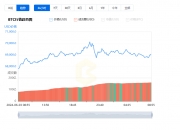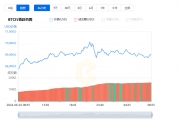Blockchain?is a shared, immutable ledger that facilitates the process of recording transactions and tracking assets in a business network.?
An?asset?can be tangible (a house, car, cash, land) or intangible (intellectual property, patents, copyrights, branding). Virtually anything of value can be tracked and traded on a blockchain network, reducing risk and cutting costs for all involved.
Business runs on information. The faster information is received and the more accurate it is, the better. Blockchain is ideal for delivering that information because it provides immediate, shared, and observable information that is stored on an immutable ledger that only permissioned network members can access. A blockchain network can track orders, payments, accounts, production and much more. And because members share a single view of the truth, you can see all details of a transaction end to end, giving you greater confidence, and new efficiencies and opportunities.
?
Build a kick-starter blockchain network and start coding with IBM's next-generation blockchain platform.
Register for the guide on sustainability trends
All network participants have access to the distributed ledger and its immutable record of transactions. With this shared ledger, transactions are recorded only once, eliminating the duplication of effort that’s typical of traditional business networks.
No participant can change or tamper with a transaction after it’s been recorded to the shared ledger. If a transaction record?includes?an error, a new transaction must be added to reverse the error, and both transactions are then visible.
To speed transactions, a set of rules that are called a smart contract?is stored on the blockchain and run automatically. A smart contract defines conditions for corporate bond transfers, include terms for travel insurance to be paid and much more.
Those transactions show the movement of an asset that can be tangible (a product) or intangible (intellectual). The data block can record the information of your choice: who, what, when, where, how much. It can even record the condition, such as the temperature of a food shipment.
These blocks form a chain of data as an asset moves from place to place or ownership changes hands. The blocks confirm the exact time and sequence of transactions, and the blocks link securely together to prevent any block from being altered or a block being inserted between two existing blocks.
Each additional block strengthens the verification of the previous block and hence the entire blockchain. Rendering the blockchain tamper-evident, delivering the key strength of immutability. Removing the possibility of tampering by a malicious actor, and builds a ledger of transactions you and other network members can trust.
What needs to change: Operations often waste effort on duplicate record keeping and third-party validations. Record-keeping systems can be vulnerable to fraud and cyberattacks. Limited transparency can slow data verification. And with the arrival of IoT, transaction volumes have exploded. All of this slows business, drains the bottom line, and means that we need a better way. Enter blockchain.
With blockchain, as a member of a members-only network, you can rest assured that you are receiving accurate and timely data. And that your confidential blockchain records are shared only with network members to whom you granted access.
Consensus on data accuracy is required from all network members, and all validated transactions are immutable because they are recorded permanently. No one, not even a system administrator, can delete a transaction.
With a distributed ledger that is shared among members of a network, time-wasting record reconciliations are eliminated. And to speed transactions, a set of rules that are called a smart contract can be stored on the blockchain and run automatically.
Step inside the basics of blockchain technology: how blocks contain data representing anything of value, how they’re chronologically connected in an immutable chain, and the differences between blockchain and cryptocurrencies such as Bitcoin.
Learn how the decentralized nature of blockchain sets it apart from traditional record-keeping, the value of a permissioned blockchain for business transactions, and how blockchain promotes new levels of trust and transparency.
The food industry is just one of many being transformed through blockchain technology. Learn how it can trace when, where and how food has been grown, picked, shipped and processed — all while protecting network-participant data.
Blockchain creates trust because it represents a shared record of the truth. Data that everyone can believe in will help power other new technologies that dramatically increase efficiency, transparency and confidence.
A public blockchain is one that anyone can join and participate in, such as Bitcoin. Drawbacks might include the substantial computational power that is required, little or no privacy for transactions, and weak security. These are important considerations for enterprise?use cases?of blockchain.
A private blockchain network, similar to a public blockchain network, is a decentralized peer-to-peer network. However, one organization governs the network, controlling who is allowed to participate, run a consensus protocol and maintain the shared ledger. Depending on the use case, this can significantly boost trust and confidence between participants. A private blockchain can be run behind a corporate firewall and even be hosted on premises.
Businesses who set up a private blockchain will generally set up a permissioned blockchain network. It is important to note that public blockchain networks can also be permissioned. This places restrictions on who is allowed to participate in the network and in what transactions. Participants need to obtain an invitation or permission to join.
Multiple organizations can share the responsibilities of maintaining a blockchain. These preselected organizations determine who submit transactions or access the data. A consortium blockchain is ideal for business when all participants need to be permissioned?and have a shared responsibility for the blockchain.
When building an enterprise blockchain application, it’s important to have a comprehensive security strategy that uses cybersecurity frameworks, assurance services, and best practices to reduce risks against attacks and fraud.
IBM Food Trust is helping Raw Seafoods increase trust across the food supply chain by tracing every catch right from the water — all the way to supermarkets and restaurants.
INBLOCK issues Metacoin cryptocurrency, which is based on Hyperledger Fabric, to help make digital asset transactions faster, more convenient and safer.
The IBM Blockchain Platform can change the way your ecosystem ensures trust, data provenance and efficiency to improve patient care and profitability. Read: Transform healthcare outcomes
Vertrax and Chateau Software launched the first multicloud blockchain solution built on IBM Blockchain Platform to help prevent supply chain disruptions in bulk oil and gas distribution.
The Home Depot is using IBM Blockchain to gain shared and trusted information on shipped and received goods, reducing vendor disputes and accelerating dispute resolution.
Industry leaders are using IBM Blockchain to remove friction, build trust, and unlock new value. Select your segment to see how.
Supply chain
Healthcare
Government
Retail
Media and Advertising
Oil and gas
Telecommunications
Manufacturing
Insurance
Financial services
Travel and transportation
Bitcoin is an unregulated, digital currency. Bitcoin uses blockchain technology as its transaction ledger.
This video illustrates the distinction between the two.
The IBM Blockchain Platform is powered by Hyperledger technology.
This blockchain solution can help turn any developer into a blockchain developer.
Visit the Hyperledger website for details.
IBM Blockchain Platform Software is optimized to deploy on Red Hat? OpenShift?, Red Hat’s state-of-the-art enterprise Kubernetes platform.
This means that you have more flexibility when choosing where to deploy your blockchain network components, whether on-premises, in public clouds, or in hybrid cloud architectures.
For a more detailed look at how a blockchain network operates and how you can use it, read Introduction to distributed ledgers.
Learn more from the blockchain tutorial on IBM Developer
Explore the capabilities of the IBM Blockchain Platform, the only fully integrated enterprise-ready blockchain platform that is designed to help you accelerate the development, governance, and operation of a multi-institution business network.
Register to download the IBM Blockchain Platform white paper
Get the details on Hyperledger Fabric and discover what’s unique about it, why it matters to business networks and how to start using it.
Visit the Hyperledger page on IBM Developer
The quick-start guide for developers explains how to build a kick-starter blockchain network and start coding with the IBM Blockchain Platform Starter Plan.
View the quick-start guide for developers
Technical innovators turn to the IBM Blockchain Platform, the leading Hyperledger Fabric platform to build, operate, govern, and grow blockchain solutions across any computing environment through Red Hat? OpenShift?.
As the top-ranked blockchain services provider, IBM Blockchain Services have the expertise to help you build powerful solutions, based on the best technology. More than 1,600 blockchain experts use insights from 100+ live networks to help you build and grow.
Embracing an IBM Blockchain solution is the fastest way to blockchain success. IBM convened networks that make onboarding easy as you join others in transforming the food supply, supply chains, trade finance, financial services, insurance, and media and advertising.
We asked five artists — all new to blockchain — to create art about its key benefits. See what they made, then learn more from IBM clients and business partners in Blockparty, our new webinar series.
Be inspired by how innovators are transforming their businesses using the IBM Blockchain Platform. You can join an existing blockchain network or work with us to create your own.
Learn how our clients are revolutionizing their organizations by using IBM Blockchain to gain tangible business outcomes.
注册有任何问题请添加 微信:MVIP619 拉你进入群

打开微信扫一扫
添加客服
进入交流群




















发表评论